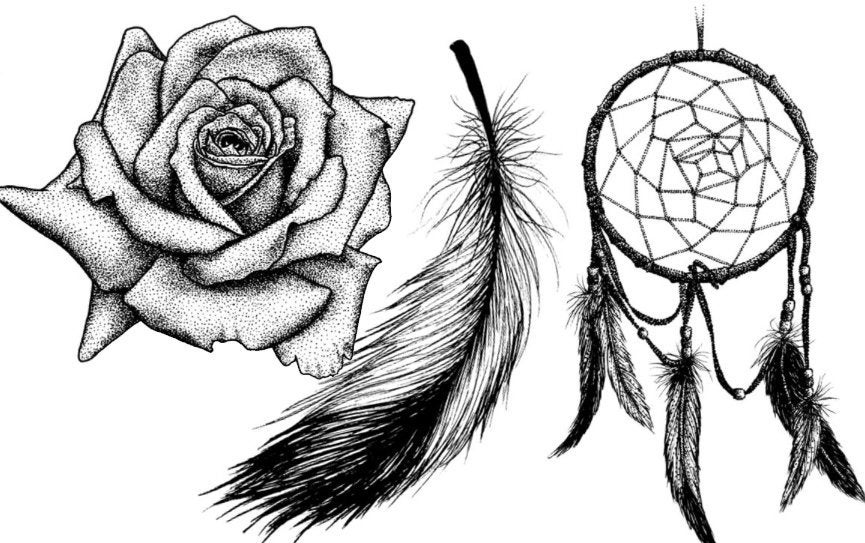“I have always found that the reasons behind a person getting a tattoo are as fascinating as the designs themselves,” Trent Aitken-Smith writes in the introduction of his book The Tattoo Dictionary.
The tattooed images, he says, often meld together history, myth, tattoo tradition and personal significance. The Tattoo Dictionary, written by Aitken-Smith and illustrated by Ashley Tyson, delves into these histories of iconic tattoos, from a simple rose to the currently trendy feather.
Those drawn to the weightless aesthetic of the image may not be familiar, however, with the ancient Egyptian connotation of feathers. According to their beliefs, “Osiris, god of the Underworld, weighed the souls of the dead against the white Feather of Truth, or Ma’at, on a great golden scale: only those that proved lighter than the feather were admitted into the Egyptian ‘heaven’.” The rest were, unfortunately, thrown to the crocodile gods.
Whether you’re contemplating committing to your first ink, or looking to read up on the artworks that already adorn your flesh, this A–Z compendium of tattoo wisdom will make sure your next tattoo adventure is not a regrettable one. Below, we’ve excerpted 10 of our favorite tattoo histories from the book, from arrow to sword. Read on to learn the secret histories of your favorite tattoos.
1. Arrow

”Within hunter-gatherer cultures, the arrow has always held strong symbolic meaning, not only as a tool that is used to sustain and protect, but also in more philosophical ways.
“One of the strongest and longest-lasting associations is found among Native Americans. For these peoples, the arrow was a hugely important symbol that quite literally meant life ― it was the tool they used to hunt for food to feed their families as well as the weapon they used to protect them. It was a symbol of war as well as peace. Within Native American cultures, the sign of two crossed arrows is used to represent an alliance, while an arrow broken in two is a sign of peace.
“Of course, arrows are also commonly associated with Cupid, the Roman god of love, so it is often used as a symbol of passion, affection, or love. But probably the true power of the arrow lies in the ease with which it can be adapted to convey an individual meaning, based on its use and appearance. An aesthetically simple, yet striking, image, the arrow remains a powerful symbol however it is viewed or interpreted.”
2. Butterfly

”Because of its seemingly near-miraculous ability to change its form completely, the butterfly has always been prominent in folklore and mythology. In its simplest form, the butterfly is a symbol of transformation, renewal, and resurrection, but has also been associated with the soul in many cultures. The ancient Greeks depicted the soul (psyche ) as a butterfly, and in Christian art Jesus was often shown holding a butterfly on carvings and tombs.
“Some of the most striking butterfly designs were created by early tattoo artists, who would often work symmetrical images such as skulls, owls, and gypsy women’s faces into the wings. Nowadays, because of the myriad of colours and forms they can take, butterflies are often chosen purely for their aesthetic appeal.”
3. Dice
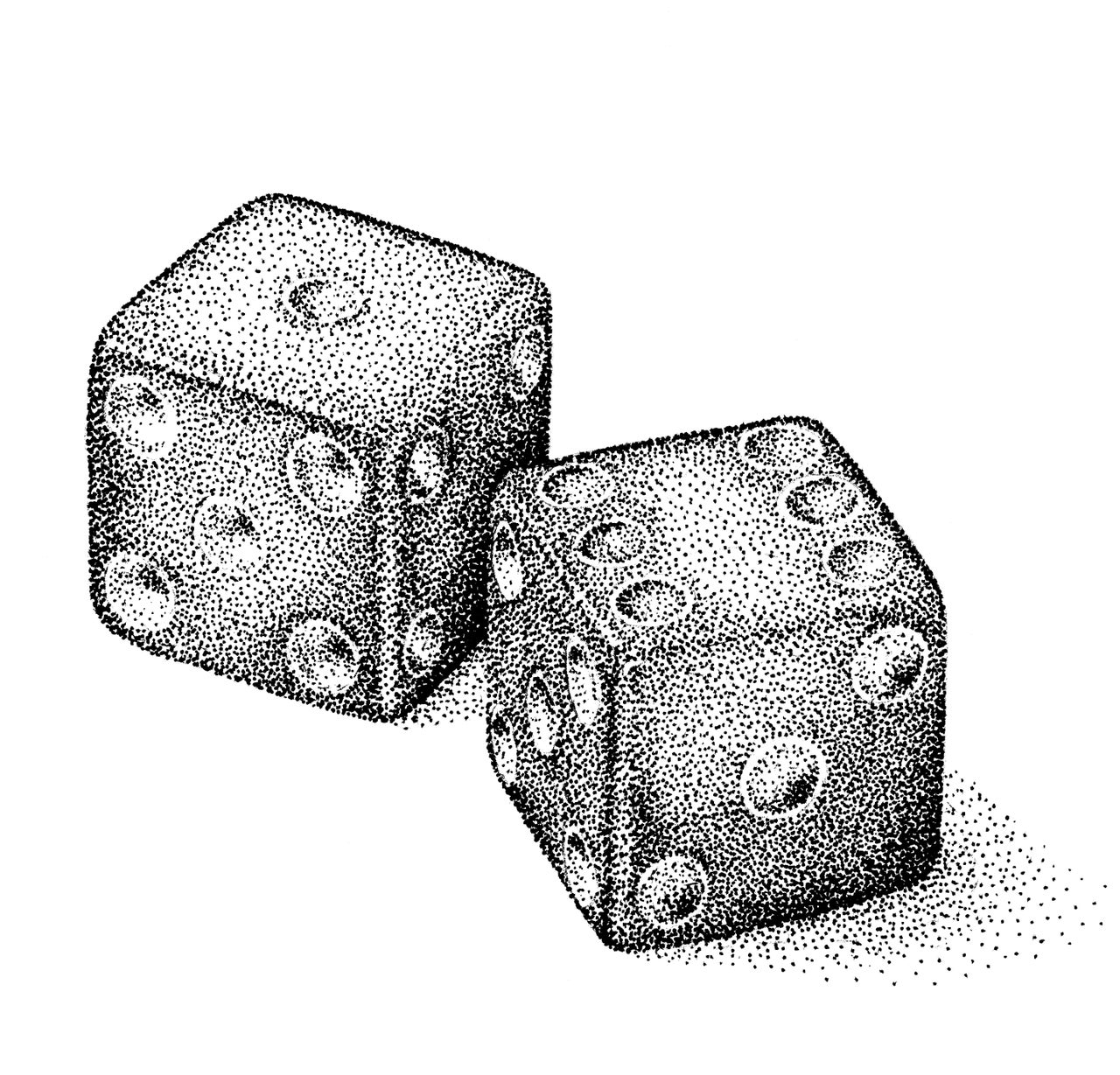
”A symbol for luck and a metaphor for life, dice are representative of how we sometimes perceive life to be. We throw the dice and our fate is revealed; we have no more control over the result than we have over what tomorrow will bring. Because dice have historically been used for gambling, they can also be representative of a gambler or risk taker ― someone who will make decisions based on the ‘roll of the dice.’ When tattooing a pair of dice, it is common to use three and four dots on the visible faces to make a total of seven.
“This is because the number seven is seen as a symbol of good luck or good fortune, and in the dice game craps a throw of seven will win. Dice adding up to 11 are sometimes used for much the same reasons, but this is not as common.”
4. Dreamcatcher
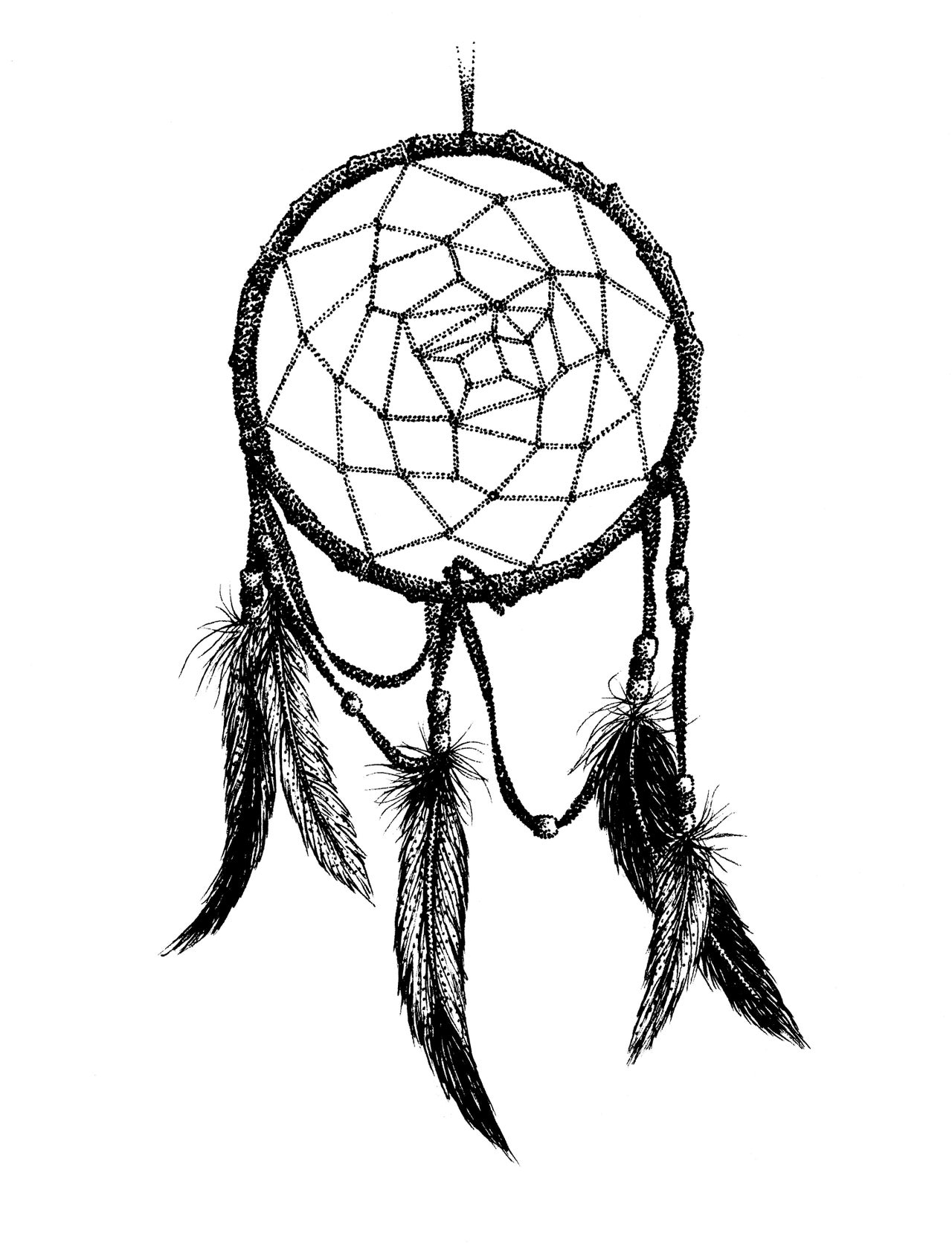
“Originating in Native American culture, the dreamcatcher is a hoop made of willow that is then decorated using sacred objects such as feathers and beads. The circle, or hoop, is a powerful symbol in some Native American traditions, where it is seen as a sign of strength and unity; in others, the hoop is representative of the sun and the moon, and their journey across the sky. The hoop is woven with a fine net, or web, with a small circle in the centre. The purpose of the dreamcatcher is to let the ‘good dreams’ pass through the centre, while the ‘bad dreams’ are trapped within the net. When dawn breaks, the bad dreams that have been caught within the dreamcatcher are destroyed by the rising sun.”
5. Feather
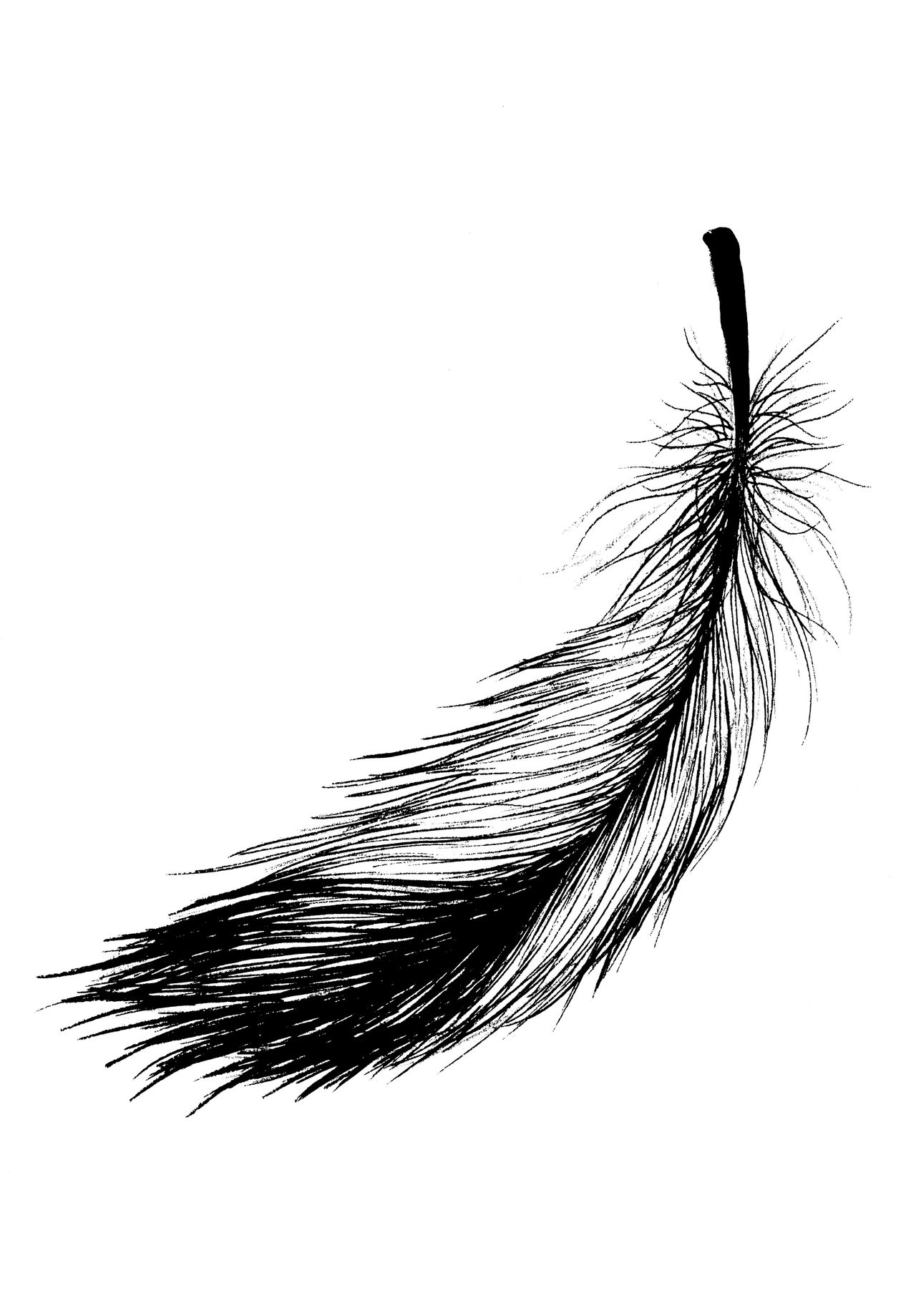
”Admired as much for their beauty as for what they symbolize, feathers have long been a popular design choice in tattooing. In most mythologies and folklores, the feather is associated with the purity of the heart and soul. In ancient Egyptian belief, Osiris, god of the Underworld, weighed the souls of the dead against the white Feather of Truth, or Ma’at, on a great golden scale: only those that proved lighter than the feather were admitted into the Egyptian ‘heaven,’ the Field of Reeds; the rest were thrown to the crocodile god Amenti.
“For Native Americans, feathers were a powerful symbol that connected them to the spirits of birds. Eagle feathers were given, as a great honour, to warriors who showed the most bravery and courage, and a headdress adorned with such feathers was thus a record of their achievements. Feathers also symbolize the attributes we usually associate with birds ― freedom of the mind and heart; our flight through life, and the wings to reach spiritual enlightenment. Modern some of these associations may be, but they have roots in ancient cultural beliefs and folklore.”
6. Koi
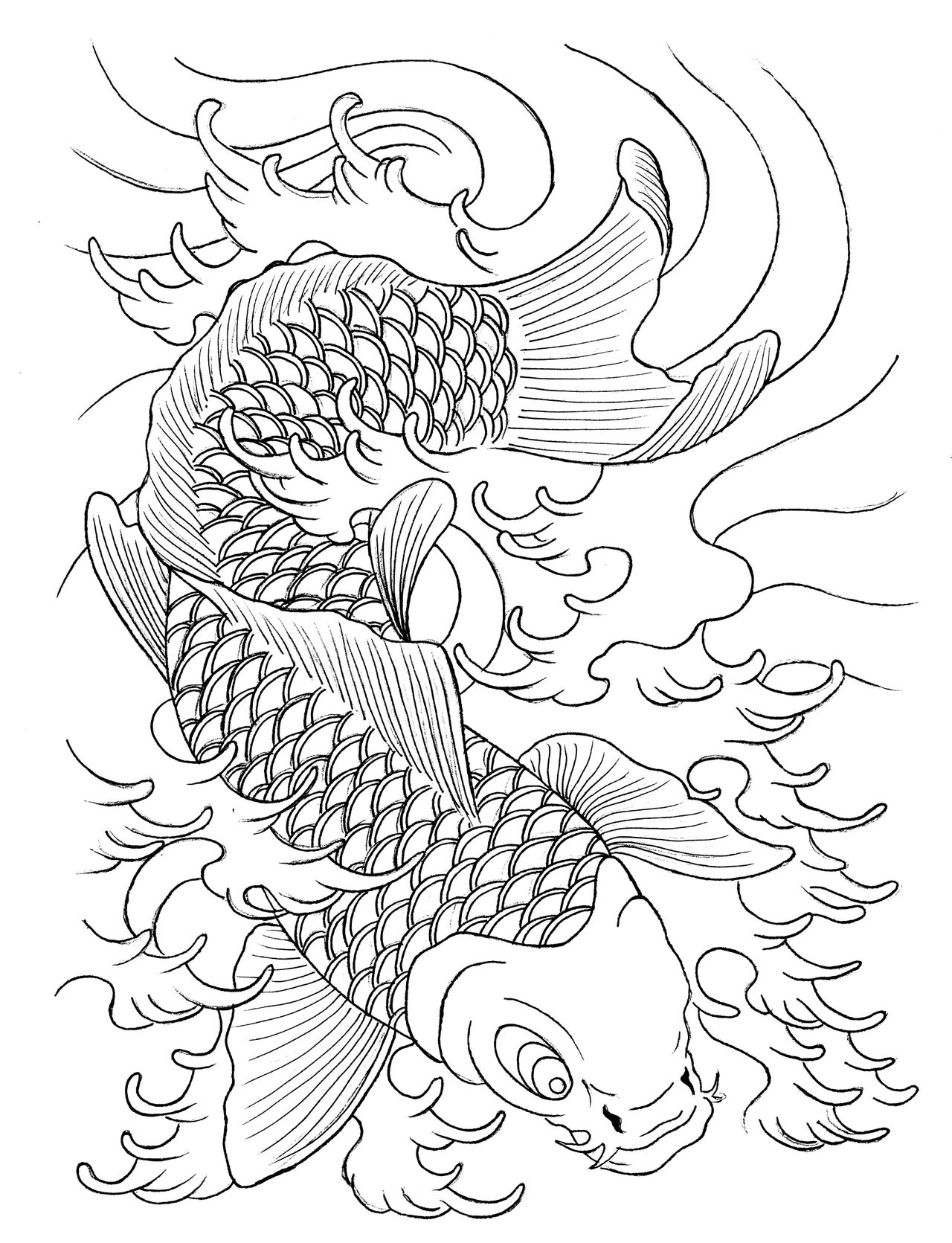
“A fish native to Central and East Asia, the koi carp can be seen in many traditional Japanese tattoos. Koi are associated with masculine characteristics such as strength and bravery, as well as being symbols of determination and the desire to succeed. According to legend, the koi in China would attempt to swim upstream, against the current of the Yellow River, and finally faced a waterfall known as the Dragon’s Gate. Very few would even make it to that point and any that succeeded in climbing the waterfall would be rewarded by being turned into a golden dragon.
“For this reason, most koi tattoos will be placed on the body so that they are swimming ‘upstream’ (that is, up the wearer’s body). As with all Japanese tattoos, the secondary attributes of the motif are important: for this reason, colour and placement, for example, should be considered when choosing the koi as a design.”
7. Rose
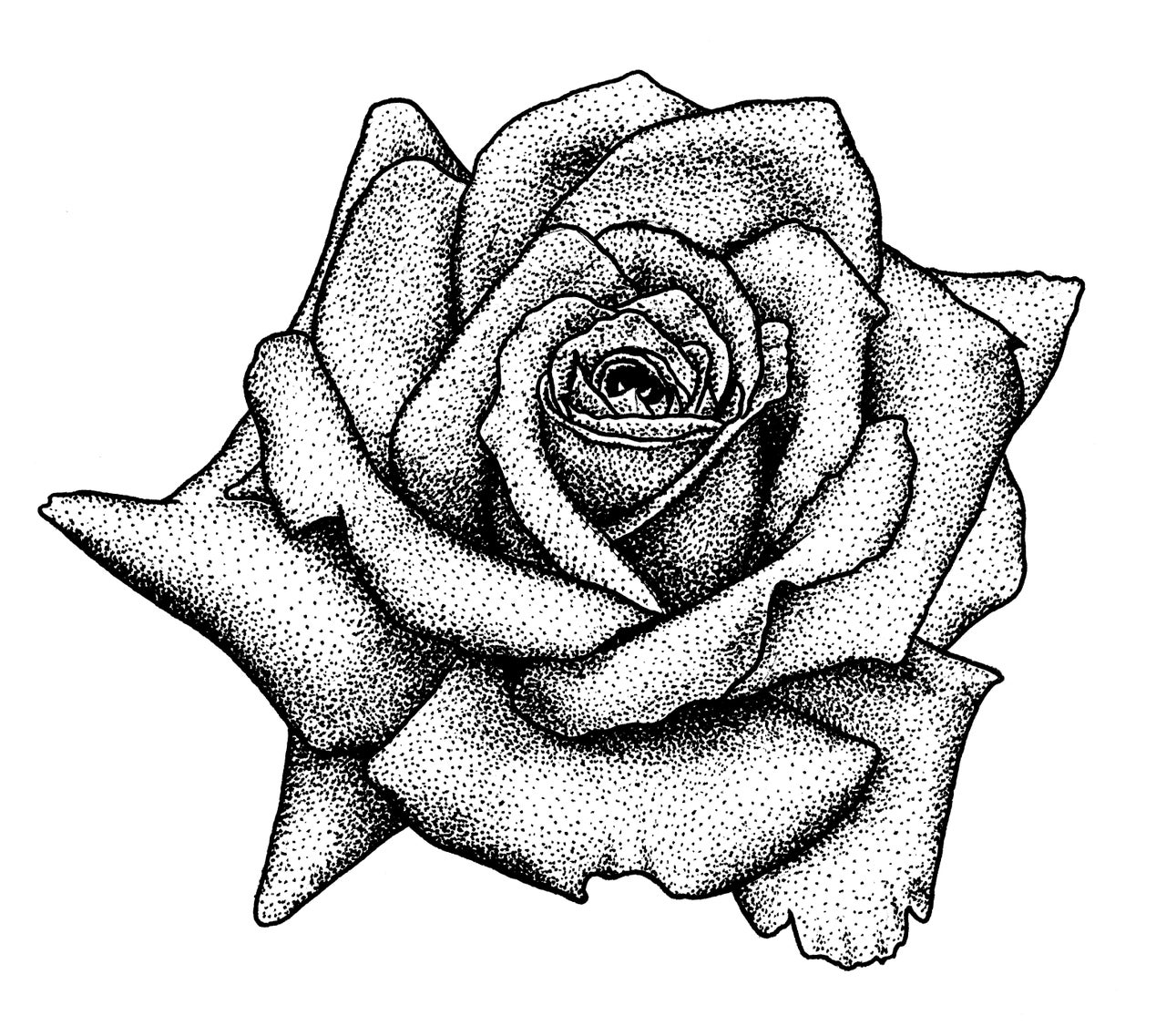
“Of all the symbols for love, the rose must be the most universal and powerful. The simple beauty of the flower has touched the human heart since ancient times, when it was closely associated with goddesses such as Aphrodite/Venus and Isis. A rose bush was said to have grown from the spilled blood of Adonis, Aphrodite’s slain love, as well as from the goddess’s tears, and was thus a symbol of undying love. In Christianity, the five rose petals symbolized Christ’s five wounds, and a rose bush was said to have grown on the site of the Crucifixion. The rose was also closely associated with the Virgin Mary: in Catholicism, the sequence of prayers to the Mother of God is known as the rosary (’crown of roses’).
“The rose also appears in the tarot, most notably on the cards for The Fool, The Magician, Strength, and Death. These four cards, among other interpretations, are symbolic of transformation, mysticism, and illumination. In England, the rose is the national flower, dating back to the reign of Henry VII (1485–1509), when he combined the red and white rose to form the Tudor Rose, to show unity between the houses of York and Lancaster after the Wars of the Roses. The rose is a flower that has long held the imagination ― on the surface a powerful symbol of passion and love, but rich with deeper, esoteric connotations as well.”
8. Snake
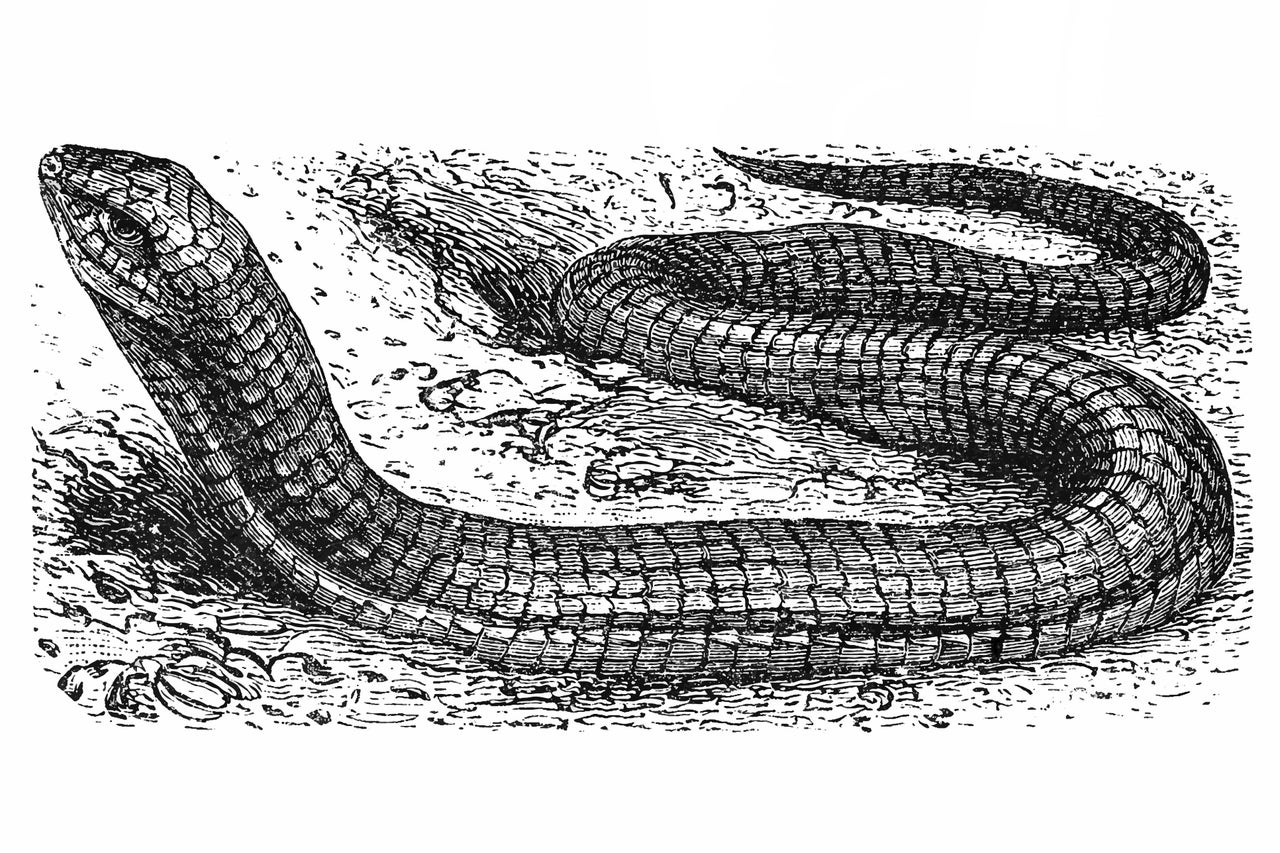
“To fully cover the symbolism and mythology of the snake would probably take up a book on its own. It is one of the oldest and most powerful symbols in human civilization, and can be found in nearly every culture and mythology. Around the world, and through history, the snake has come to represent many different ideas ― from the duality of good and evil to fertility and secret knowledge. Because a snake is able to shed its skin, it is also seen as a symbol of rebirth and regeneration. Some religions revere the snake as a representation of a deity, while other religions, such as Christianity, view the snake as an evil entity bent on bringing ill fortune, sin, and chaos to the world. Ultimately, the snake is a powerful symbol in the human psyche and, therefore, a popular design choice for tattooing.”
9. Swallow
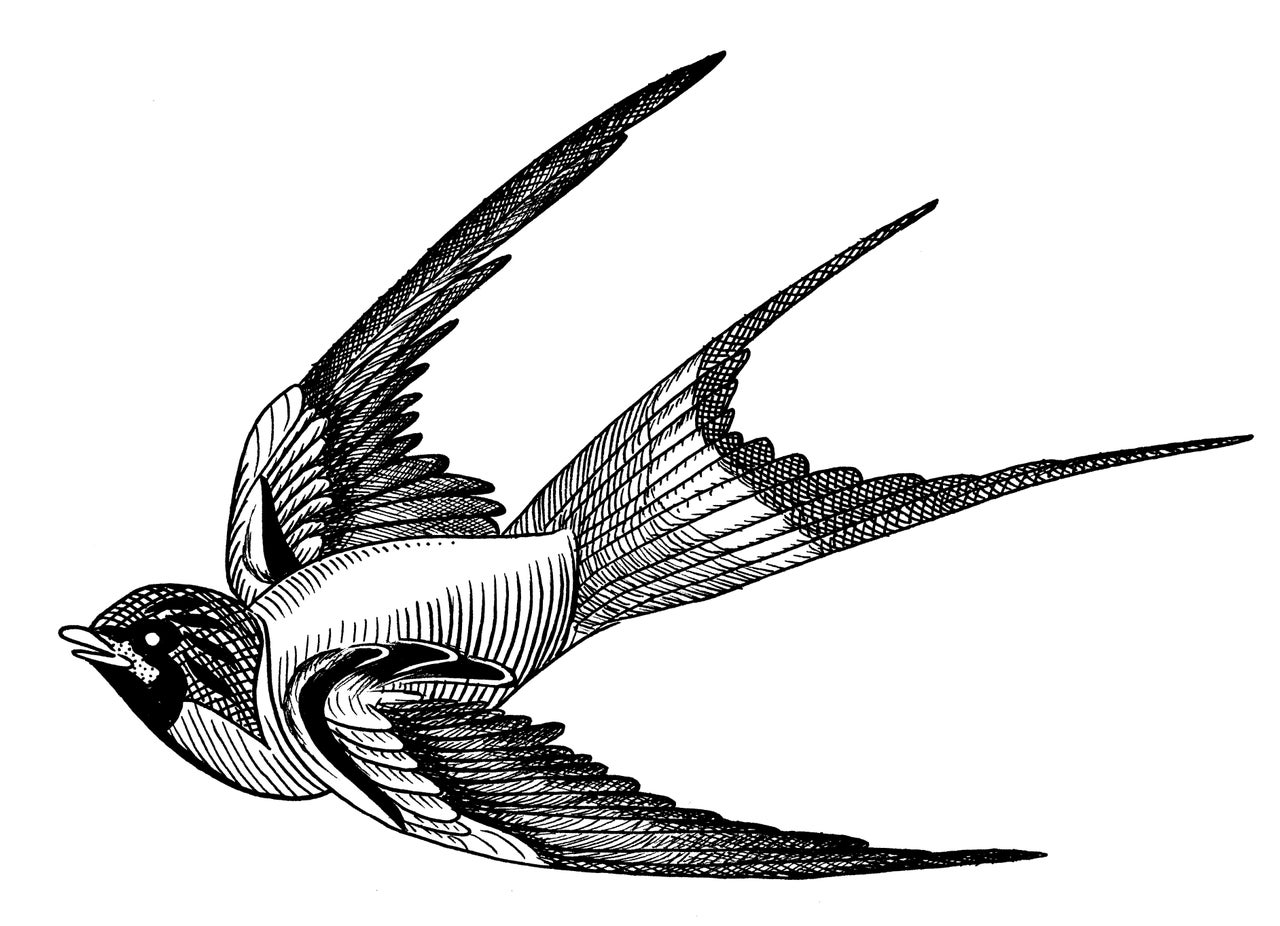
“One of the most iconic nautical tattoos, the swallow has long been used by sailors to show their experience on the sea. Though many different legends circulate about the origins of the motif, the most common belief is that it represents having travelled over 5,000 nautical miles; having two swallows, naturally enough, represented 10,000 nautical miles.
“Another belief is based on the fact that the swallow always returns home to nest; therefore, having a swallow tattoo was a form of talisman for a sailor: they, too, would eventually return safely to their home port after a long journey. Often, a sailor would get one swallow on his outward journey and another once safely back home. Another legend states that, if a sailor died at sea, birds would carry his soul to heaven ― another reason to have this important symbol by one constantly. The swallow was traditionally tattooed on the chest, hands, or neck.”
10. Sword
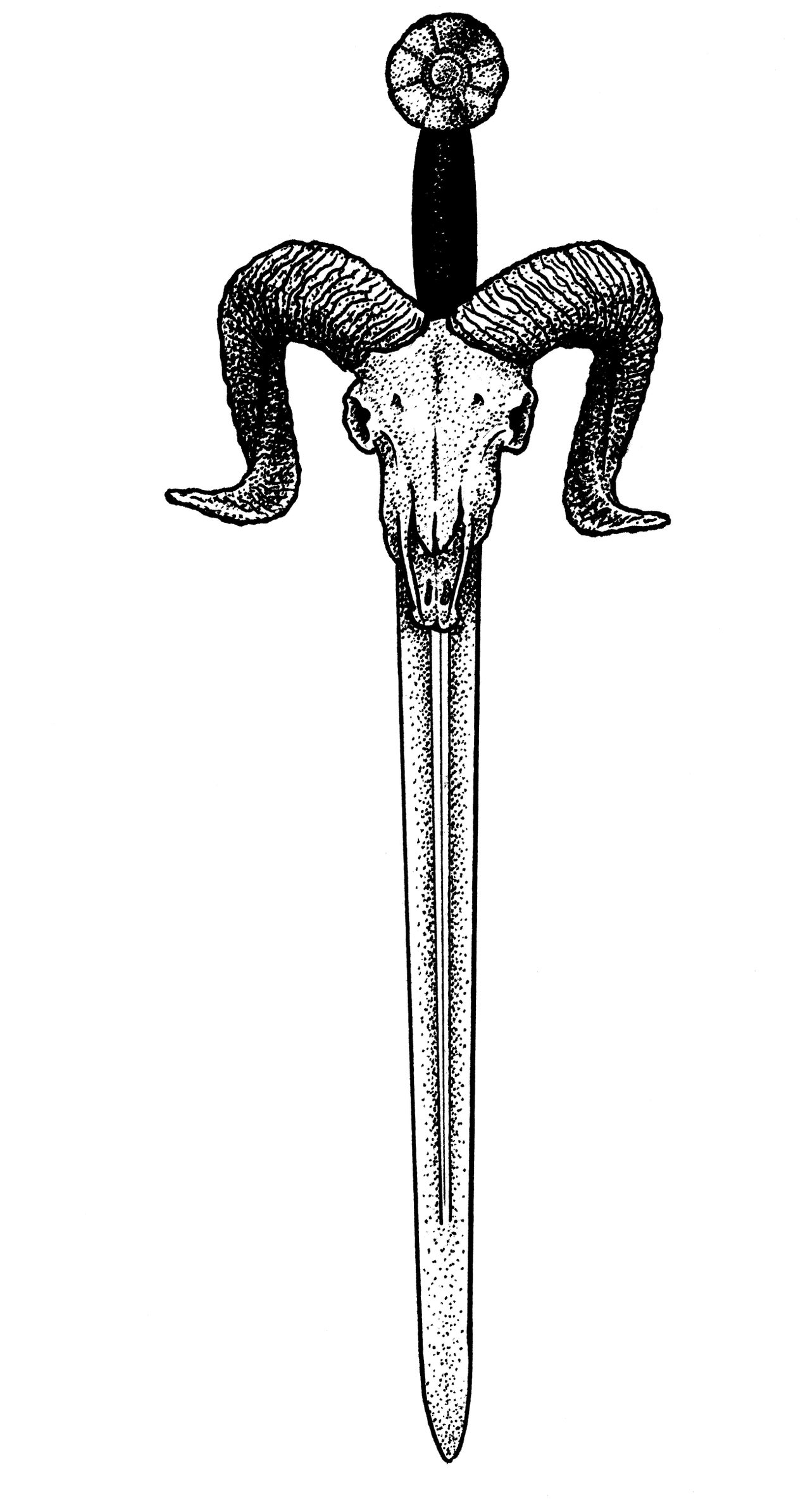
”The motif of the sword instantly evokes ideas of protection, courage, and strength; we think of the knight in shining armour going into battle to save the land or to rescue a persecuted maiden. Many warrior peoples such as the Saxons viewed the sword as an extension of their being ― to relinquish it was not only to be dishonoured but to lose one’s identity. However, the sword also has plenty of metaphysical and philosophical associations as well, no doubt in some part linked to these surface meanings.
“In alchemy, the sword is a symbol of purification, piercing the spiritual soul of man, while in Buddhism the sword is used to cut away the earthly bonds of man so that he may receive enlightenment. Swords are seen as powerful talismans, given to folklore heroes so that they can carry out their quests: the young Arthur wins Excalibur and thus asserts his right to be king, while the Greek hero Perseus is given a sword by his father Zeus, so that he can kill the monstrous Medusa.”
